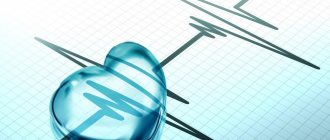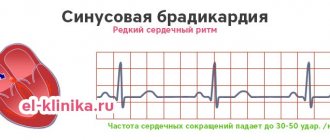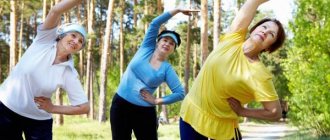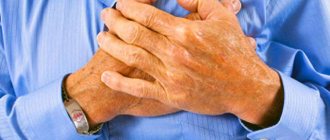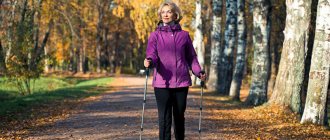Heart rhythm disorders affect up to 6% of the population worldwide—millions of people. And most often doctors are faced with atrial fibrillation. How to avoid interruptions in the work of the heart, who is at risk and what to do if the “motor” is already bothering you, said the leading researcher at the laboratory of cardiac disorders, Candidate of Medical Sciences, Associate Professor, X-ray endovascular surgeon Dmitry GONCHARIK.
Is it possible to play sports?
The heart muscle, like other muscles in the human body, needs training. Arrhythmia, related to diseases of the cardiovascular system, can be treated with physical activity with the right approach and reasonable exercise. For example, light running, just walking, and various types of exercise therapy are very popular. Wherein:
- stimulates glucose absorption;
- the body receives more oxygen;
- additional energy is released;
- the heart begins to work in an economical mode;
- Strength increases and heart rate decreases.
To fulfill all these conditions, regular classes are required, in between which a doctor assesses the patient’s health. The physical form of each patient is determined through special diagnostic procedures.
Is exercise effective for cardiac arrhythmia?
Dosed physical activity, taking into account a person’s abilities, health pathologies and additional parameters, improves metabolism, accelerates blood flow and restores functions in affected organs.
The scheme and number of classes for each disease are developed and monitored by a cardiologist and exercise therapy specialist. Acceptable types of activities for arrhythmia:
- Qigong is an ancient Chinese martial art with the concentration of internal energy;
- swimming;
- walking;
- yoga;
- Pilates is a set of exercises for the development of all muscle groups.
The patient is urged not to prescribe training for himself or to practice unfamiliar movements, as this threatens the development of complications. Any physical activity during atrial fibrillation, frequent attacks of tachycardia and circulatory disorders in the brain is unacceptable!
The following sports are prohibited:
- Weightlifting;
- bodybuilding (especially with the use of anabolic steroids);
- breath holding exercises;
- use of an expander;
- jump rope;
- speed running;
- contact martial arts;
- diving.
These sports cause increased stress on the heart muscle, which leads to disruption of the body's compensatory capabilities and the development of complications.
Exercise for heart rhythm disturbances
For patients with arrhythmia, it is best to start their morning with exercise. Its daily repetition helps normalize the heartbeat and increases the strength of the heart vessels. A standard home complex is:
- walking in place;
- body turns;
- body tilts;
- circular movements of the pelvis;
- swing your legs.
Each exercise is performed at least 10 times.
It is best to warm up before your first meal or 2-2.5 hours after it. If the load becomes easier each time, then you can increase the number of repetitions. Important to remember! Do not exceed 30 times for each exercise. This is the most optimal amount of load for morning exercises.
Benefits of breathing exercises for the heart
Technically correct performance of breathing exercises for arrhythmia brings the heart rhythm back to normal. The body is also saturated with the required amount of oxygen, and cardiac function is normalized. Breathing exercises can be as follows:
- half squats or full squats;
- work with inhalations: close the right nasal sinus with the fingers of your right hand, and move the opposite hand to the side and inhale slowly. Repeat the same with the other hand;
- do the previous exercise, but in a sitting position;
- alternately and slowly inhale and exhale 4 times.
Such a breathing complex should be completed by repeating it completely, but at the same time, each time you inhale and exhale, as if pronouncing the letter “U” with your lips.
Yu.Ya. Kamenev. Breathing exercises in the naturotherapy system
What you need to know when starting to learn gymnastics
Pages:
|All
|
Paradoxical breathing exercises according to A. Strelnikova is a powerful therapeutic and health remedy. By doing it, you will get rid of all kinds of complexes, you will be able to perceive the world around you more acutely, you will begin to feel your body, you will feel cheerfulness, peace of mind and psycho-emotional comfort. The skin will smooth out and vision will improve. During and after gymnastics there is no muscle pain, no palpitations, no shortness of breath, no weakness or dizziness.
If the exercises are difficult for you, or you feel the above symptoms, then you are making some mistakes in their execution. Most often it is a desire to breathe in more air. Do not do that. If slight shortness of breath appears 15-20 minutes after the start of class or even earlier, do not be alarmed. It can be stopped with exercises “Cat” (see Fig. 2.1), “Turning the head” (see Fig. 2.1), “Pump” (see Fig. 2.5), while reducing the number of inhalations-movements to 2-4 in a row . Do not do 1000 of them per lesson, but only half with a rest of 15-20 minutes, and at the end of the day - the second half.
If you are a singer, actor, teacher, lecturer, or if you suffer from a stutter, you can practice breathing not only through your nose, but also through your mouth. Don't be afraid of your throat getting dry. This will pass, and your throat will feel pleasantly cold. The most useful exercises for you are “Pump” (see Fig. 2.5), “Half squat” (see Fig. 2.13). If during or after exercise a dry, unproductive cough begins or, especially at first, the mucous membrane of the nose or throat dries out, do not be alarmed. Do not forcefully clear your throat or blow your nose. Breathe once more through your nose or mouth, sputum will gradually begin to come out, and the nasal mucosa will become moist. Be patient.
To help a singer or a person who stutters, there are a number of rules and special sound exercises. If you do the “Pump” exercise 15-20 hundred times a day (see Fig. 2.5), of course, not without a break at first, then after 3-4 days of training it will be easier to speak and sing. Breathing exercises are the only and unique means of staging and restoring a lost voice without drugs or surgeries.
“From my forty years of practice,” noted A. N. Strelnikova, “I know: our gymnastics relieves anxiety, normalizes high blood pressure and reduces high body temperature.”
At a high body temperature, 38°C, gymnastics should be done lying down or sitting, at an elevated temperature - up to 38°C - while standing. If you are over sixty years old, be careful: do not take more than 8 breaths-movements; if you are younger, do not limit their number. Measure your body temperature before starting exercise, and you will see that it will return to normal after each workout, decreasing more often by 0.5 °C if it does not exceed 39 °C, and at a higher level - by 0.3 °C .
Persons suffering from heart disease, atrial fibrillation, and coronary heart disease should not do the “Hug your shoulders” exercise during the first week of classes, and during the second week, do 8 inhalations-movements followed by rest for 3-4 seconds. In the third week, the number of exercises should be increased to 32 without breaks. It is not recommended to raise your legs high when performing “Rock and Roll” (see Fig. 2.11).
In case of pulmonary edema, in patients with severe disease, with heart or asthmatic attacks, gymnastics is a salvation. It should be done in a lying position, many times in a row, in short cycles. Exercises should only be selected by a doctor in accordance with the patient’s condition.
The number of inhalation movements instead of 32 should be limited to 2, 4, 8, and they should be performed not twice a day, but much more often, until a clear improvement is felt. Then you can do gymnastics in a sitting position and increase the number of breaths to something that is easy to do.
Gymnastics has a positive effect on impaired thyroid function and, in diabetes mellitus, reduces blood sugar levels; with anemia, the level of hemoglobin increases, and with unusual speed.
The positive effect of breathing exercises has also been noted in pulmonary tuberculosis. According to research by the Moscow Central Research Institute of Tuberculosis, good results were obtained after just a month of training, even in severely ill patients. Elevated body temperature, blood pressure and its gas composition, and peripheral blood parameters normalized. Pain in the heart disappears, infiltrates in the lungs resolve and decay cavities in them heal, and external respiration functions significantly improve.
If you have suffered a myocardial infarction, stroke, or are simply old or frail, start doing gymnastics while lying down, with the “Turning the Head” exercises (see Fig. 2.1), or performing the “Pump” exercises (see Fig. 2.5), “Cat” ( see Fig. 2.7). In the first days of training, the training norm is 6 hundred breaths and movements, if this is acceptable to you. When you feel better, before doing these exercises while standing, try doing them while sitting or even lying down. Add to them the “Steps” exercise (see Fig. 2.14). Get plenty of rest. Increase the number of inhalations and movements gradually to 8, 10, 12 hundred and so on.
In case of urolithiasis and cholelithiasis, severe myopia, high blood pressure, during pregnancy (starting from 4-5 months), exclude the “Pump” at first. Also, you should not make sudden movements when performing the “Turning the Head” exercises (see Fig. 2.1).
Patients with thrombophlebitis should perform the “Rock and Roll” exercise in a sitting position and pause for 2-4 seconds after every 8 breaths-movements.
Starting from 4-5 months of pregnancy, the “Hug your shoulders” exercise is recommended, using only your arms, without tilting your head back. When performing Rock and Roll, you should not raise your knees high.
For persons who have suffered a brain injury, spinal injury or have been injured in a car accident, caution is required when performing the “Cat” (see Fig. 2.7), “Big Pendulum” (see Fig. 2.6) exercises. They should be limited. You can replace them with the “Half Squat” exercise (see Fig. 2.13), performing it 2-3 times more. Bowing to the ground is not recommended, only waist bows are allowed. Gymnastics also helps with epilepsy. The lesson plan is as follows: “Turn your head” (see Fig. 2.1), “Hug your shoulders” (see Fig. 2.4) for 1-2 hundred breaths and movements. Mandatory in the first days is “Pump” (see Fig. 2.5) - in a sitting position, 2 hundreds of 8-16 breaths-movements in a row, “Steps” (see Fig. 2.14). Performing these exercises even removes the feeling of an impending attack. Continue the exercises and you will prevent an attack. If an attack occurs during the 1st or 2nd lesson, do not be alarmed: it will be shorter and easier than usual. Get up and continue your activities. It’s not bad if, when a semi-fainting state occurs, one of your loved ones supports you, affectionately patting your head with the words: “Don’t worry, nothing happened, you’ll get better.” When you can, get up and continue your exercises.
Patience and work will help you with all ailments.
TUI breathing simulator for atrial fibrillation, pressure, shortness of breath
Methods used
The choice of method of implementation and appropriate exercises for a patient with arrhythmia is based on the type and stage of the disease. They are determined by the doctor. If a patient is diagnosed with atrial fibrillation, excessive stress on the body is contraindicated, and the patient engages in physical exercise exclusively in a hospital under medical supervision. When the cardiovascular system is damaged, there are several well-known methods to choose from:
- according to Bubnovsky;
- according to Buteyko;
- according to Strelnikova.
For reference! Their implementation does not require overstraining the muscles to the point of exhaustion. It is enough to follow the technique. It is thanks to this that the desired therapeutic effect is achieved.
Bubnovsky's technique
The method proposed by Bubnovsky is based on the involvement of the gluteal and leg muscles in the work. The main thing in the technique: inhale while squatting, and exhale when standing up . This breathing technique allows you to evenly distribute blood from the heart to the entire body. The maximum load is placed on the lower limbs, and not on the heart itself.
In one approach, the patient can perform from 5 to 20 squats with breathing, depending on his well-being and level of physical fitness. At the beginning of the course, 3 approaches will be enough. As you practice, the growth of approaches, as well as the total number of squats in each, should be gradually increased. The effectiveness of treatment is observed by pulse readings measured before and after performing gymnastics. The obtained data is compared with the norm.
Buteyko technique
The method proposed by Buteyko is the most popular and most widespread in terms of frequency of prescriptions. The training is based on establishing the correct breathing rate, which has a beneficial effect on the heart rate. The complex can be represented by the following exercises:
- Perform 15 inhalations and exhalations, the duration of which will be 3 seconds.
- While drawing in your stomach, hold the air for 5 seconds while inhaling completely. Exhale slowly. After each approach, a 5-second break is required.
- Take 10 inhalations and exhalations through each nasal sinus in turn.
- While standing, take a shallow breath and hold your breath for 5 seconds. Take long, empty breaths. Breathing is done through the nose. When performing the exercise, the abdomen and chest should remain in their original position, that is, not move.
Important! The Buteyko technique, when actively performing the complex, not only improves cardiac activity, but also helps strengthen the entire body.
Strelnikova's technique
Strelnikova’s exercises are best used in the treatment of sinus arrhythmia. Breathing according to her method in this case allows you to normalize the frequency of contractions of the heart muscle, and in the early stages of the disease, completely recover. Gymnastics should be performed regularly, and the load should be increased gradually. The complex is performed standing and includes the following technique:
- Take up to 8 shallow breaths, and then take 8 steps with a short breath on each step.
- Starting position – standing, hands on your belt. As you inhale, lower them down, and as you exhale, return to the starting position.
- Hands along the body, back straight. As you inhale, your fists clench, as you exhale, they unclench. 6 repetitions are done with a break.
- Feet shoulder width apart. As you inhale, the body tilts down with your arms moving to the sides. As you exhale, return to the starting position. Do 12 repetitions with breaks.
Strelnikova’s gymnastics gives results quite quickly. Patients manage to overcome low or high heart rates. If the patient’s well-being begins to deteriorate, then the exercises should be temporarily stopped until the state of health stabilizes and the speed of execution should be reduced next time. You can learn about the exercises and their correct implementation from the following video clip.
Atrial fibrillation
The chronic form of atrial fibrillation requires constant use of medications
Atrial fibrillation (in other words, atrial fibrillation) comes in two main forms: temporary (paroxysmal) and permanent or chronic.
Manifestations of atrial fibrillation are the same as for cardiac arrhythmia:
- Feeling of heart failure;
- feeling of “bubbling” in the chest;
- fainting;
- darkening of the eyes.
Complications of fibrillation include strokes and gangrene as a result of arterial thrombosis. Blood clots form because the blood is “churned” like in a mixer due to the chaotic contraction of the atrium walls. The clot then adheres to the inner wall of the atria. If you take appropriate medications, the risk of thrombosis is sharply reduced.
Regularly taking medications prescribed by your doctor will prevent the development of complications and improve the quality and length of your life. Be healthy!
General information about atrial fibrillation
Atrial fibrillation is the most common form of supraventricular arrhythmia, in which the atria contract chaotically at a rate of 400-600 per minute without coordination with the ventricles of the heart. The role of a filter for the frequency of impulses conducted to the ventricles is performed by the AV node (normally, the atrioventricular node is capable of conducting up to 140-200 impulses per minute). Therefore, with atrial fibrillation, only a portion of the impulses reach the ventricles, and their contraction occurs irregularly, resembling flickering (hence the name atrial fibrillation). The sinus node loses its function as a pacemaker.
Most people with atrial fibrillation (especially if the duration of atrial fibrillation exceeds 48 hours) have an increased risk of developing blood clots, which, because they move, can contribute to the development of a stroke. The transition from paroxysmal to persistent atrial fibrillation may contribute to the development or progression of chronic heart failure.
Symptoms of atrial fibrillation
Yoga for the heart muscle
Yoga during arrhythmia is the safest form of physical activity. When performing it, you must strictly observe breathing technique. Inhalation and exhalation is done only through the nose each time. This allows you to actively saturate the body with oxygen and makes it possible to normalize your heart rate. Technically, the movements need to be done smoothly and slowly. The complex is presented as follows:
- Starting position - on your back, legs turned to the sides. As you inhale, clasp your ankles with your hands, and as you exhale, release them.
- Lying on your back, as you inhale, lift your head and limbs off the floor, and as you exhale, return to the starting position.
- In the lotus position, we lower our palms onto our heels and, while inhaling, bend forward, drawing in our stomach as much as possible. After holding your breath for 2-3 seconds, exhale smoothly and return to the lotus position.
We must remember! With each subsequent lesson, you should increase the pace of execution. Up to 10 repetitions of each exercise is enough. Eight classes over the course of a month will be enough for patients with arrhythmia.
Massage
In the treatment of arrhythmia, in addition to medications, acupressure . Like any therapy, it has its own technique, indications for use and contraindications. Acupressure allows you to urgently improve the patient’s well-being. The principle of this technique is to work out biological points on the body. In this case, the occurrence of adverse reactions is excluded. The massage performed allows you to:
- facilitate cardiac work by ensuring peripheral vasodilation;
- improve blood supply to the heart;
- normalize metabolism in the body;
- minimize congestion during blood movement;
- increase the pumping capacity of the heart.
Massage for the treatment of heart rhythm can be prescribed in conjunction with drug therapy or be an independent course. When influencing biological active points, stroking, vibration pressure, pinching, rotating and tapping techniques are used. The massage therapist uses the fingertips, hands, elbows and fingers themselves. The massage is done slowly with alternating techniques used. If there are contraindications, acupressure is not performed.
The danger of inaction
Arrhythmia without proper treatment can lead to serious consequences or death. First, a noticeable lack of oxygen in the body is accompanied by loss of consciousness. Advanced disease causes heart failure, angina attacks and even pulmonary edema. In this case, without urgent hospitalization, the patient may die. Another dangerous consequence of arrhythmia is stroke.
Important! Patients with cardiac arrhythmia should constantly monitor their health status.
The disease is not always accompanied by severe symptoms. Physical therapy and breathing exercises can stabilize the functioning of the heart muscle. They should be carried out only after consultation with your doctor if there are no contraindications. Exercises must be performed regularly, observing technique.
LiveJournal
Arrhythmia after physical activity: what to do?
A similar condition occurs in 19-60% of cases of uncontrolled activities. The likelihood of occurrence increases in proportion to age: in people over fifty years of age it occurs in half of the episodes. Stress-induced ventricular arrhythmias manifest themselves in 36-50% of coronary heart disease in the form of extrasystoles (VCs), tachycardia (VT), and fibrillation (VF).
The most common disorders after physical activity are sinus arrhythmia (respiratory) or atrial fibrillation.
The comparative frequency of occurrence of violations is presented in the table:
| All types of PVCs, % | Frequent PVCs, % | PVCs of high gradations (pairs, triples, VT, VF), % | |
| Healthy people | 19-38 | 3-11 | 2-6 |
| Patients with coronary heart disease | 38-50 | 23-37 | 6-15 |
The patient is concerned about:
- confusion;
- dizziness;
- dyspnea;
- chest discomfort or pain.
It is necessary to immediately stop the training, ensure that the patient is in a semi-sitting position and have access to fresh air, and give him forty drops of Corvalol (Valoserdina, Valocordina) to drink with water.
In the near future after the attack, they plan to visit a doctor for examination and treatment.
Prevention of complications
- aerobic exercise takes no more than two hours a week;
- uniform loads every day;
- after intense exercise they rest;
- Before increasing dynamics, the muscles are warmed up.
